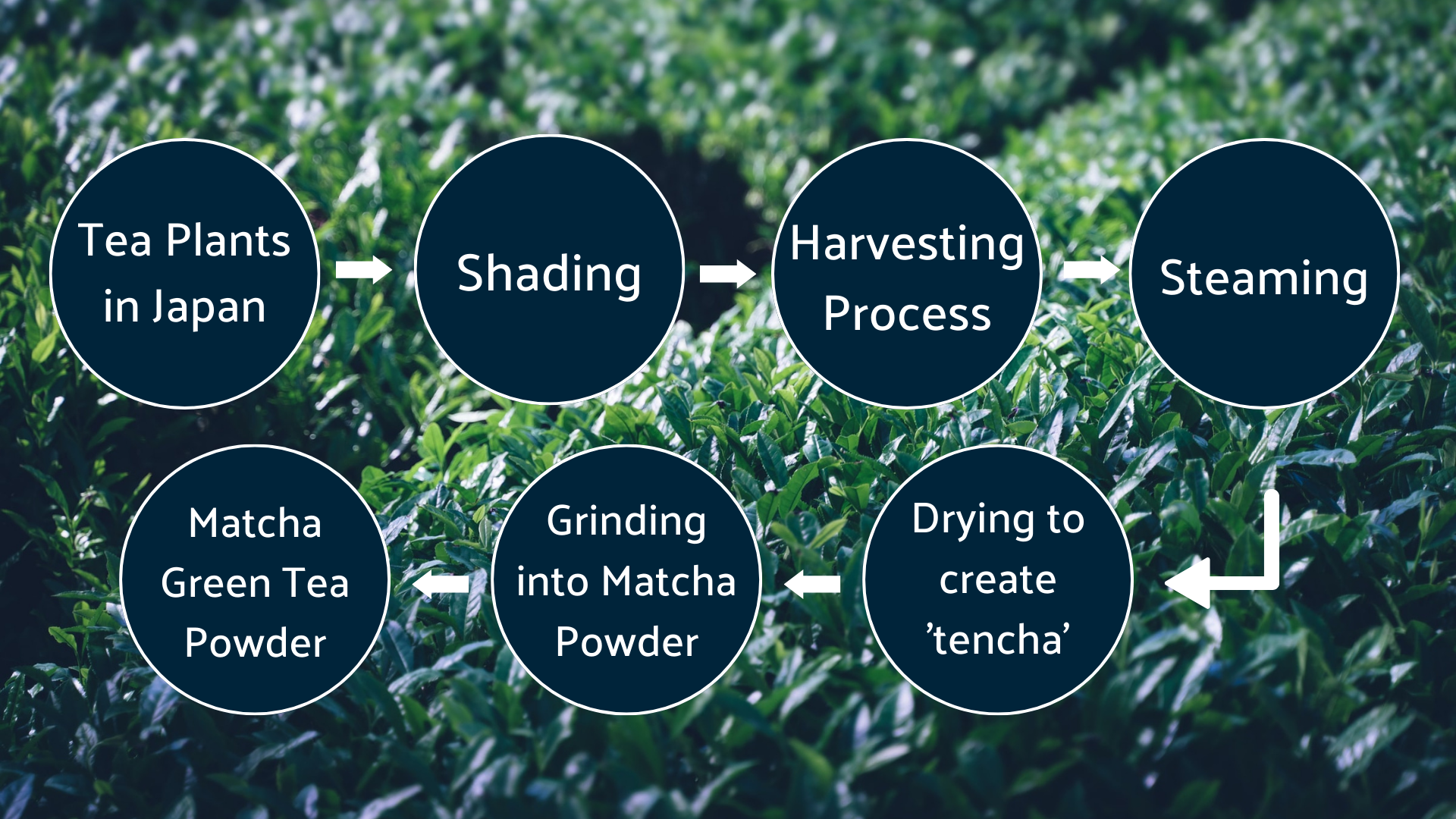From the leaf to your tea bowl, the journey of matcha green tea powder is fascinating. This process includes precise harvesting, intricate shading techniques, steaming, and traditional milling methods. Every step has its significance, contributing to matcha's unique taste and health benefits.
How Japanese Matcha Green Tea Powder is Made
Japanese matcha tea powder is made from tea plants grown exclusively in Japan. Not all tea plants are suitable for matcha production. Only specific varieties, known for their superior flavor and aroma, qualify.
Matcha Production Process – How Matcha is Made
Producing matcha is a carefully choreographed process involving skilled labor by Japanese tea farmers at each stage. From tending the plants to assessing the quality of processed leaves, each step is undertaken with precision and care.
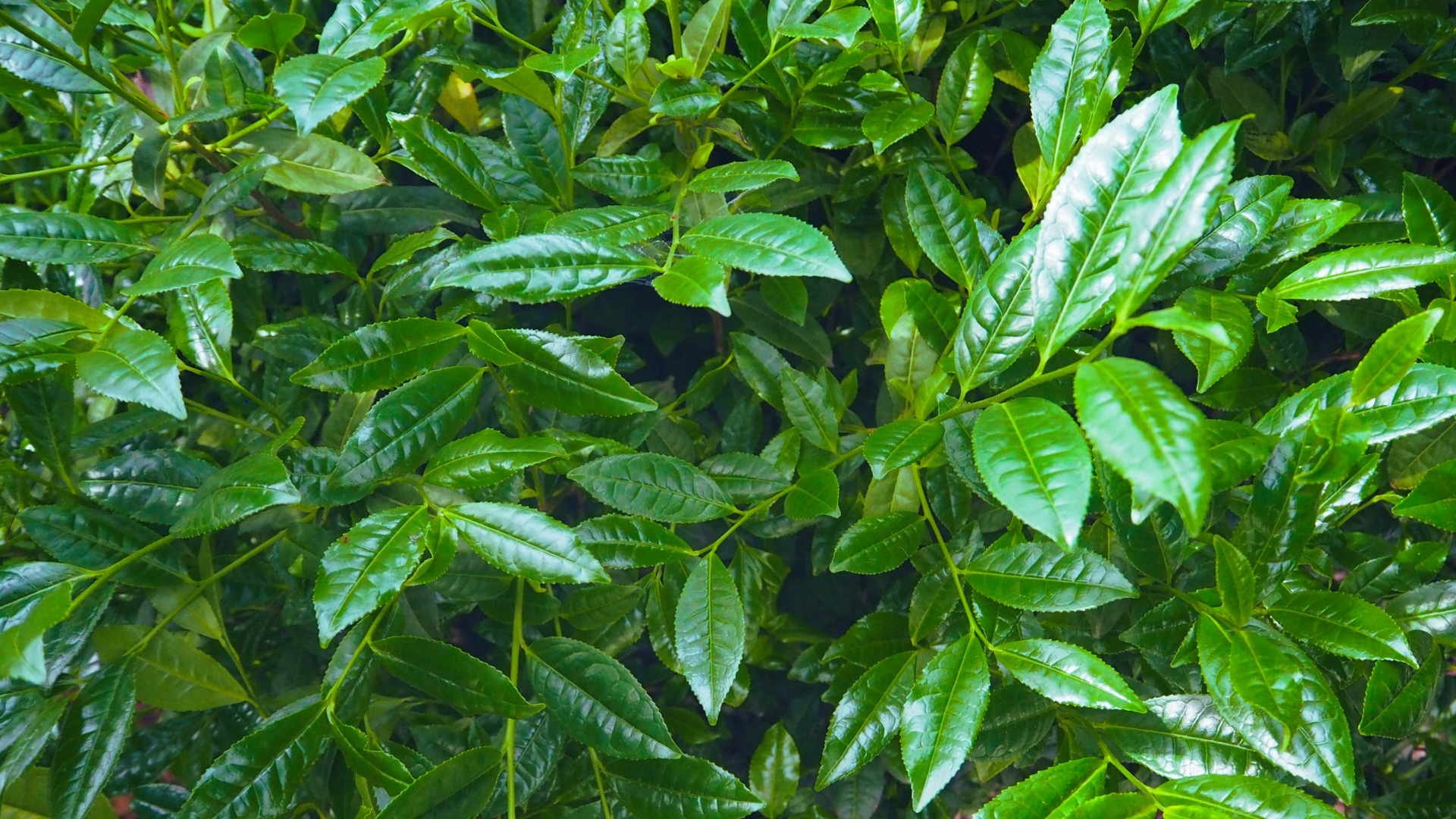
Can all tea plants be used to produce matcha?
When we talk about matcha, it's important to remember that it isn't a product of just any tea plant. Matcha is crafted exclusively from specific varieties of the Camellia sinensis plant. The unique, vibrant color and the intricate flavor profile of matcha aren't merely a result of the processing technique but are also tied to the distinct characteristics of these chosen varieties. So, while all matcha is derived from tea plants, it's only those special strains of Camellia sinensis that can truly create the authentic matcha experience we cherish.
The Harvesting Process
Harvesting matcha leaves typically occurs in the spring months. This period is crucial, as the tender, young leaves plucked during this time yield the highest-quality matcha. The most authentic matcha powder comes from the spring harvest.
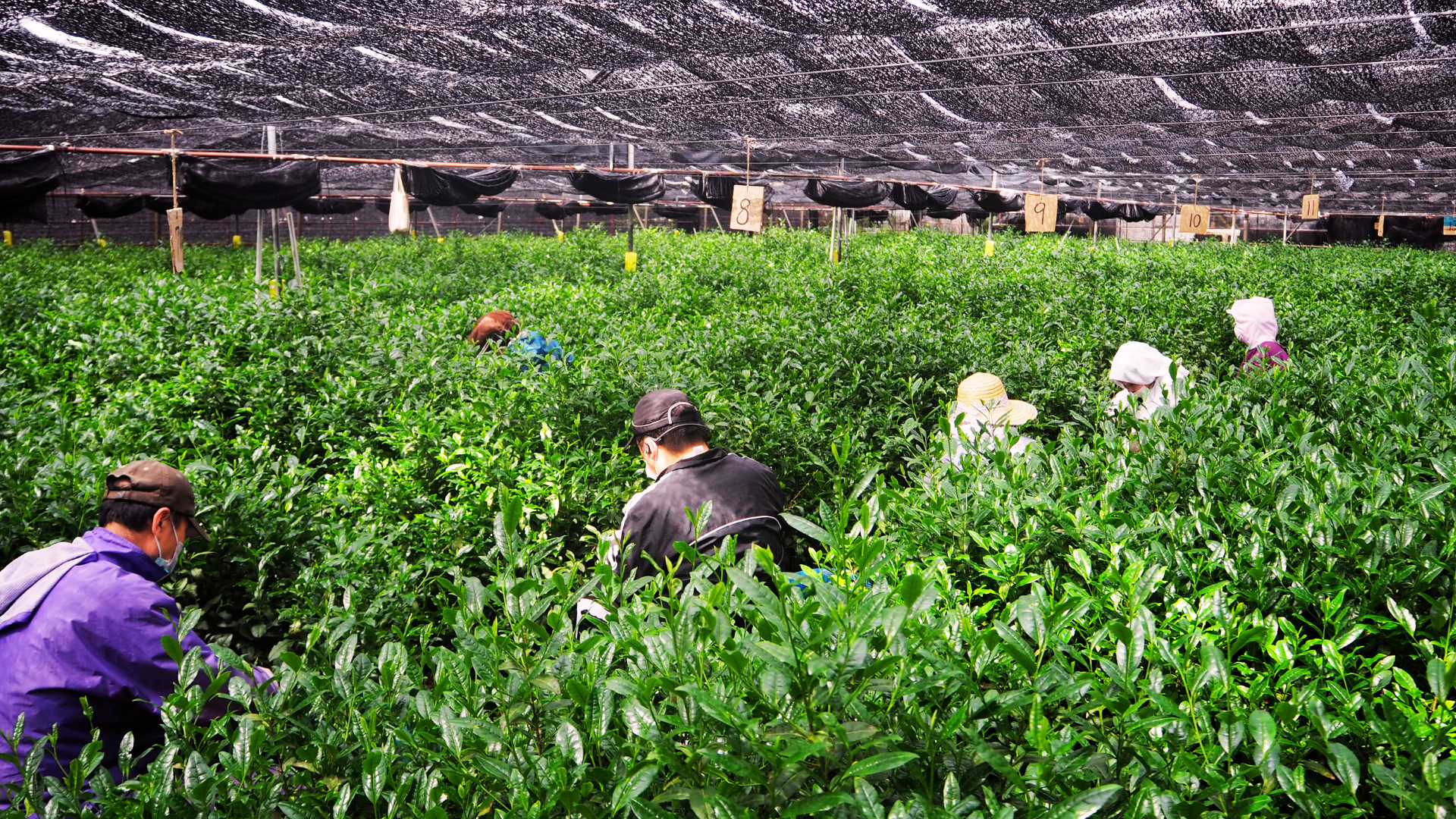
Shading – the most critical part of the making matcha
Shading is a significant aspect of matcha production. A few weeks before the harvest, tea plants are shaded to increase chlorophyll and L-theanine content. This process enhances the nutritional value and taste of the final product.
What are the processes for matcha production?
Once harvested, the leaves are steamed to stop enzymatic activity, preserving their vibrant color and preventing oxidation. The leaves are then dried to create 'tencha.' After being sampled and approved by a tea master, the tencha is ground into a fine powder - matcha.
What Does Matcha Taste Like?
Matcha has a distinct taste – a perfect balance of umami and a mild sweetness. The creamy, full-bodied texture, coupled with a slight hint of astringency, makes it truly unique.
What months are harvest season for matcha?
The journey of matcha begins with the harvest season, which traditionally takes place in the rejuvenating spring months. This period is categorized into distinct phases, each notable for the quality of tea leaves it yields.
The first harvest, fondly referred to as 'Ichibancha' or the first flush, occurs typically in late April to early May. These leaves, having rested during the winter months, bring a freshness and vitality that's unparalleled. Their dormancy throughout the year allows them to store up nutrients, thereby contributing to a higher-quality brew.
As we progress into the season, the second harvest, known as 'Nibancha,' unfolds about a month after the first. While the leaves from this flush are still flavorful, they aren't as rich as their predecessors.
Rounding off the season is the third harvest or 'Sanbancha,' another month later. By this stage, the green tea plants have already given their best and are ready to retreat into their rest phase until the spring of the following year.
In essence, the life cycle of matcha is a testament to the age-old wisdom: good things come to those who wait.

Why shading matcha tea plants is important
Shading enhances the chlorophyll levels and amino acids, particularly l-theanine in the green tea leaves. This not only amplifies the flavor and color of matcha, but also enhances its health benefits.
The Steaming Process
After being harvested, the leaves are quickly transferred to a processing facility where they are immediately refrigerated. In batches, they are put through the steaming process, which preserves their bright green color and prevents oxidation.
Tea leaves into tencha
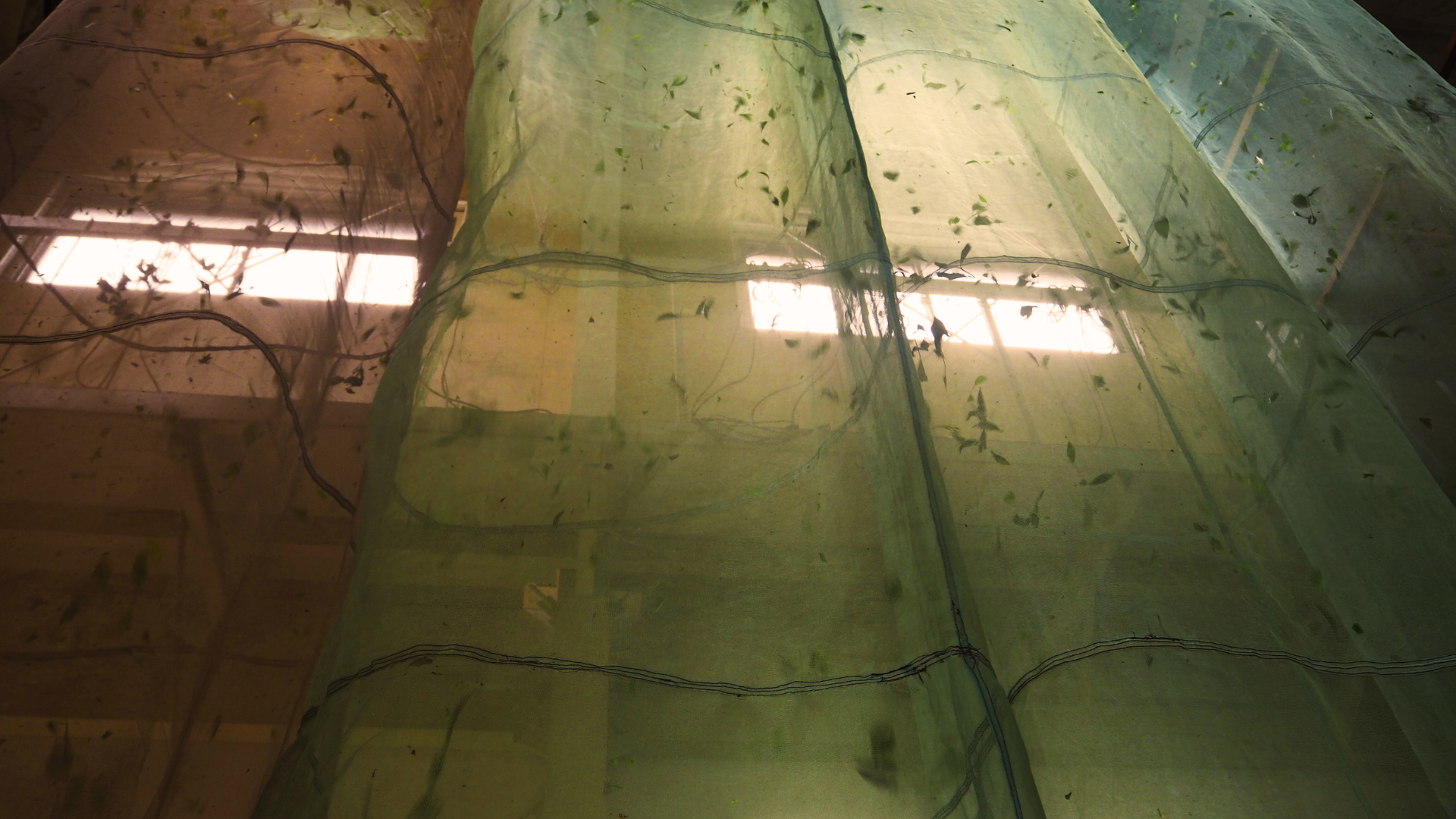
Post-steaming, the leaves go through large wind dryers to remove excess moisture. They then go through a heat drying oven, which transforms the steamed leaves into tencha.
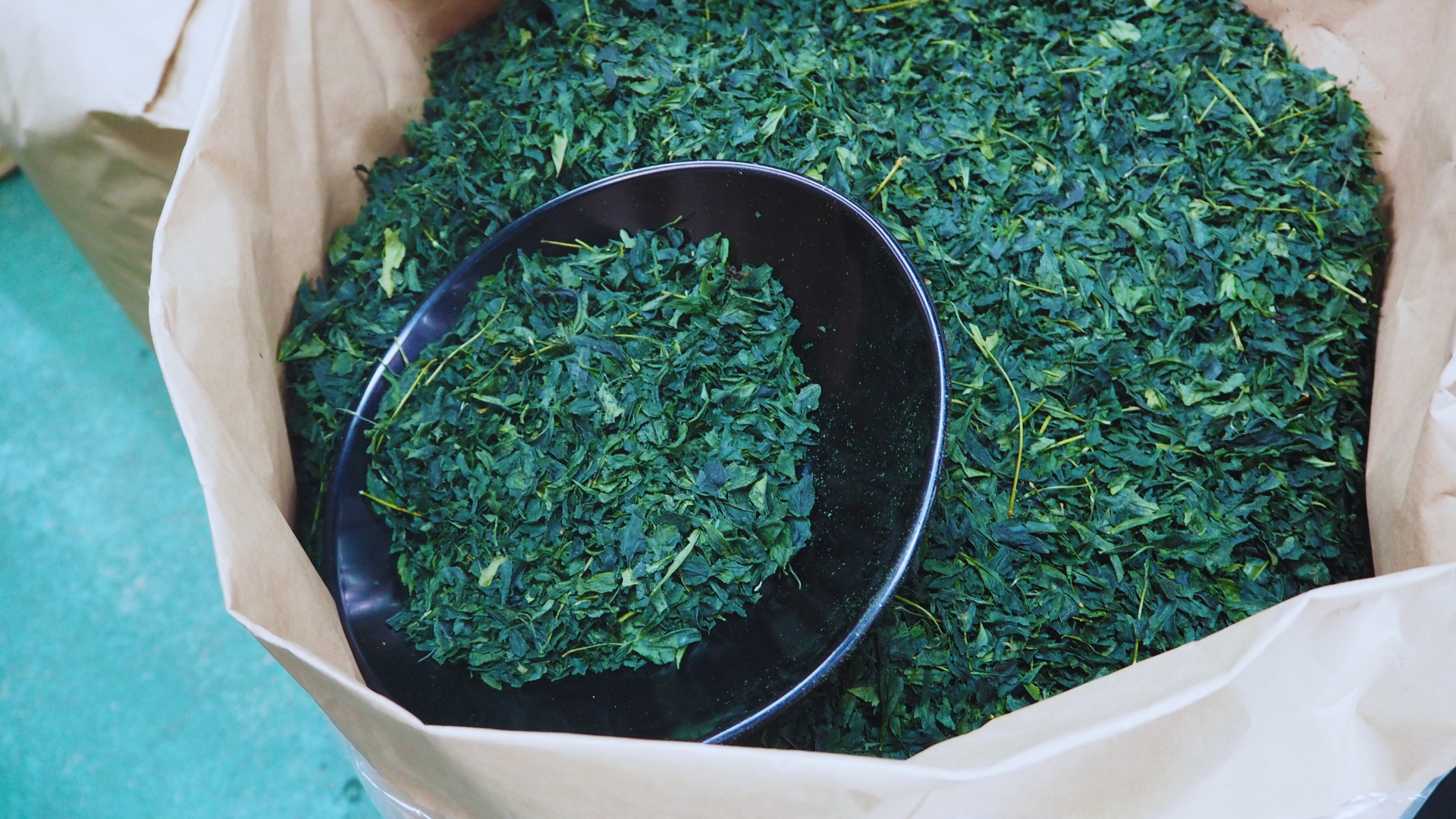
Matcha stone mill process
Tencha is then ground into matcha powder using a traditional stone mill. This slow, detailed process is essential for producing the fine, vibrant green matcha powder. The stone mill, an age-old piece of equipment, maintains a low speed and temperature, ensuring that the matcha does not lose its color and nutritional properties during grinding.
The importance of matcha powder particle sizes
The particle size of matcha powder is vital. Tea experts with a trained palate understand that high quality matcha should have a balanced flavor profile. This is achieved by a balanced mix of particle sizes in the ground tea powder. To achieve this, authentic matcha producers set the speed of their stone grinders at the optimal range, usually 48 revolutions per minute. Each stone grinder produces only 30 grams of matcha per hour.

How to Make Matcha Tea
To make matcha tea, whisk 1-2 grams of matcha powder in a warmed bowl using a bamboo whisk until frothy. The traditional method enhances the overall matcha experience. Find out more here.
Matcha Bamboo Whisk
When it comes to preparing matcha tea, the bamboo whisk, or "chasen," plays a critical role. It helps to mix the matcha powder with hot water evenly, producing a frothy, velvety tea that's rich in flavor.

Final words on how matcha is produced in Japan
The production of matcha in Japan is not just a process, but an art form, passed down through generations. The commitment to quality at every stage, from the careful cultivation of the tea plants to the meticulous grinding of tencha, ensures a superior product that is enjoyed by people worldwide.
How to Make Matcha Tea Without Whisk
While the traditional method involves a bamboo whisk, you can still enjoy matcha without it. Simply add matcha powder to a bottle with some warm water, secure the lid, and shake it until the powder is completely dissolved. It's also great with ice and cold water in a shaker bottle. The options for including matcha in your daily routine are endless. Here are some recipes to get you started.
Matcha production – Modern machine vs traditional stone mill
While modern machines are used in the production of some matcha powders, the traditional stone mill is still favored by many for its ability to produce the finest quality matcha. The slow grinding process of the stone mill results in a finer powder and ensures that the matcha retains its vibrant color and rich, nuanced flavor.
Matcha vs Green Tea
Though matcha and green tea come from the same plant, they are quite different. Matcha is a powdered form of tea, and because you consume the entire leaf, it's richer in flavor and nutrients compared to regular green tea. Learn more about the differences between matcha and green tea here.
Ceremonial Grade Matcha powder

If you're inspired to experience the unique flavor of matcha, we have everything you need to enjoy this traditional Japanese tea.
Embrace the art of matcha and enjoy the nuanced taste and health benefits it offers!


